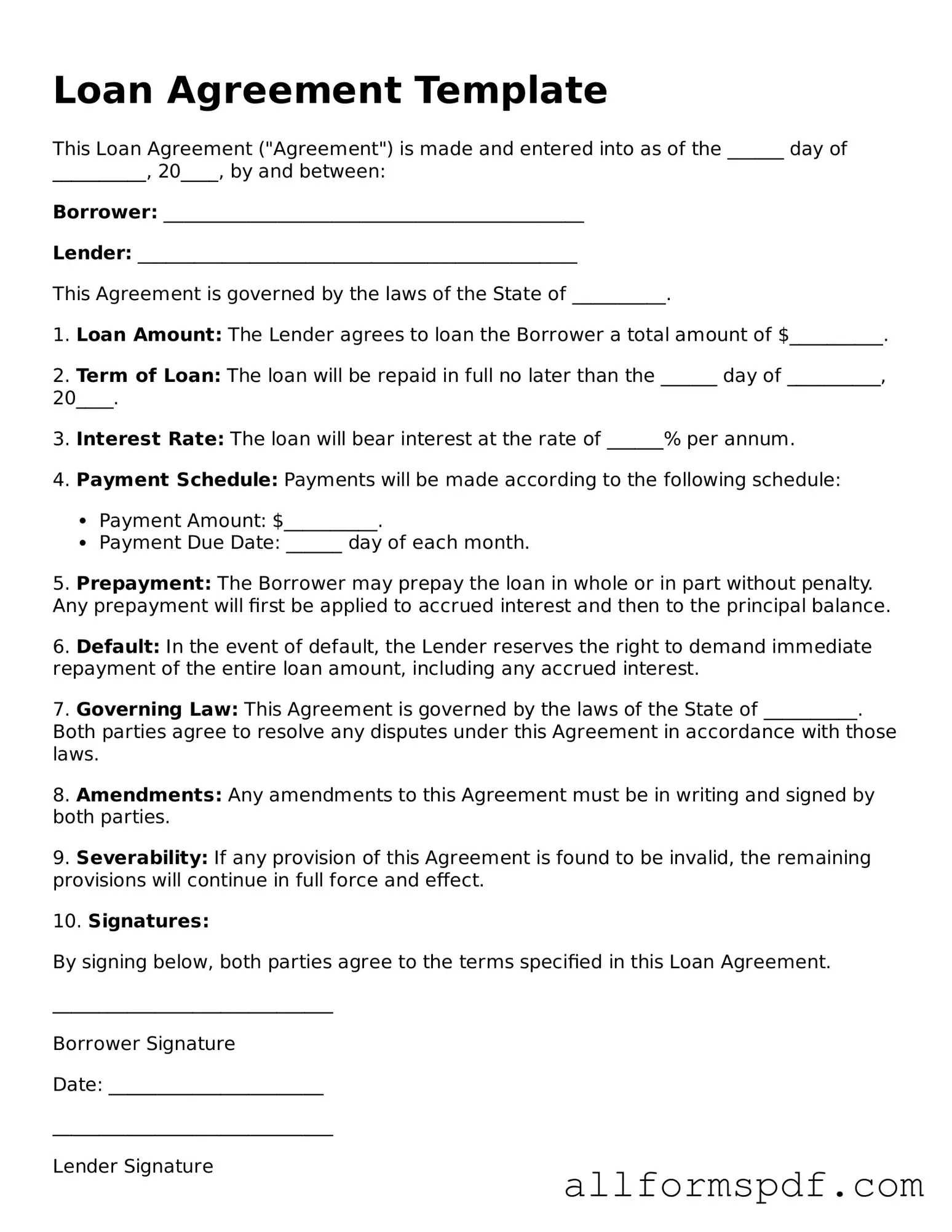Filling out a Loan Agreement form can be a straightforward process, but many individuals make common mistakes that can lead to complications. One frequent error is providing inaccurate personal information. It is crucial to ensure that your name, address, and contact details are correct. Errors in this section can delay the processing of your loan.
Another common mistake involves leaving out important financial information. Applicants sometimes forget to include their income details or fail to disclose existing debts. This omission can result in a denial of the loan or unfavorable terms.
Many individuals also overlook the importance of reading the terms and conditions carefully. Skimming through this section can lead to misunderstandings about interest rates, repayment schedules, and fees. A thorough review is essential to avoid unexpected costs later on.
Additionally, some applicants fail to sign the form. A signature is often required to validate the agreement. Without it, the loan cannot be processed, leading to unnecessary delays.
Using outdated or incorrect forms is another mistake. Loan agreements can change over time, and using an old version can lead to discrepancies. Always ensure that you have the most current form from the lender.
Inconsistent information across different sections of the form can also create confusion. For example, if the income stated does not match the documentation provided, it may raise red flags. Consistency is key to a smooth application process.
Some people neglect to provide supporting documents. Lenders often require proof of income, identification, and other relevant documents. Failing to include these can result in a longer approval process or outright rejection.
Another mistake is not asking questions when unsure about any part of the form. If something is unclear, it is better to seek clarification than to make assumptions that could lead to errors.
Moreover, applicants sometimes rush through the process. Taking the time to carefully complete the form can prevent mistakes that may cause issues later. A meticulous approach can save time and stress in the long run.
Lastly, some individuals do not keep a copy of the completed form. Retaining a copy is important for reference and can be helpful if any questions arise during the loan process. Having your own record ensures that you can provide accurate information if needed.
